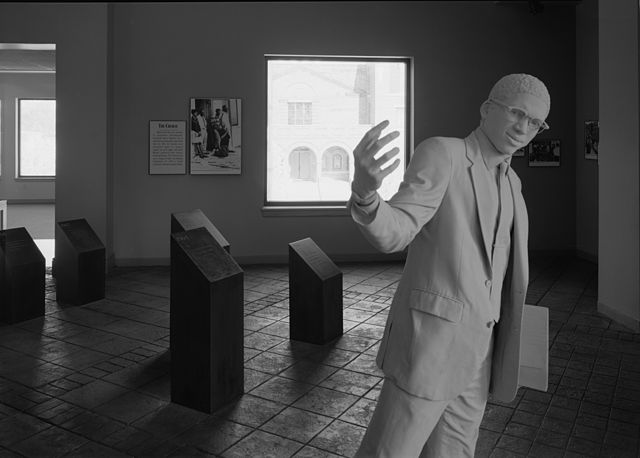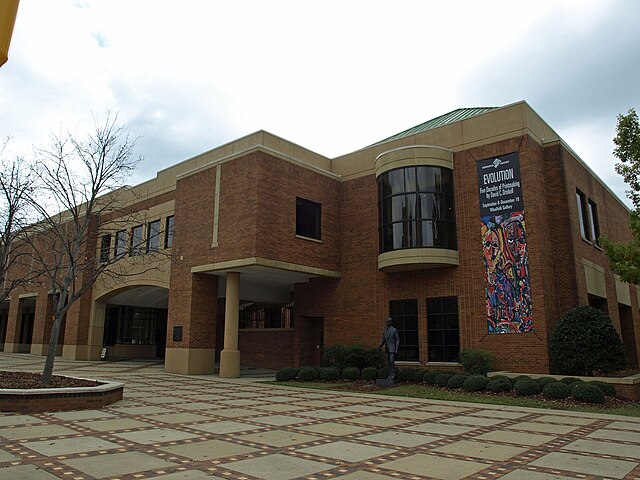When you step through the doors of the Birmingham Civil Rights Institute, you’re not just entering a museum – you’re walking into the heart of America’s struggle for equality and justice. This isn’t your typical collection of dusty artifacts behind glass cases. Instead, it’s a living, breathing testament to the courage, sacrifice, and determination that transformed not just Birmingham, but the entire nation.
What is the Birmingham Civil Rights Institute?
The Birmingham Civil Rights Institute stands as one of the most significant cultural and educational institutions in the American South. Located in the heart of Birmingham, Alabama, this world-class museum and research center opened its doors in 1992, dedicated to preserving and sharing the stories of the Civil Rights Movement.
But here’s what makes this place truly special – it’s not just about looking backward. The Institute serves as a bridge between past and present, helping visitors understand how the struggles of yesterday connect to the challenges we face today. Think of it as a time machine that doesn’t just transport you to the past, but also illuminates the path forward.
The Vision Behind the Institute
The Birmingham Civil Rights Institute was born from a simple yet powerful idea: that understanding our history is essential to building a better future. The founders envisioned a place where people from all walks of life could come together to learn, reflect, and be inspired by the remarkable stories of ordinary people who did extraordinary things.
This vision wasn’t just about creating another museum. It was about establishing a space where difficult conversations could happen, where healing could begin, and where the lessons of the past could guide us toward a more just and equitable society.
Mission and Core Values
At its core, the Birmingham Civil Rights Institute is committed to advancing human and civil rights through education, dialogue, and action. The Institute’s mission revolves around three fundamental pillars:
First, preservation – safeguarding the stories, artifacts, and memories of the Civil Rights Movement for future generations. Second, education – providing comprehensive learning experiences that help visitors understand the complexities of the struggle for civil rights. Third, inspiration – motivating people to continue the work of building a more inclusive and just society.
The Historical Context: Birmingham’s Role in the Civil Rights Movement

To truly appreciate the Birmingham Civil Rights Institute, you need to understand why Birmingham became such a crucial battleground in the fight for civil rights. The city’s history is both troubling and inspiring, serving as a microcosm of the broader American struggle with racial inequality.
The Magic City’s Dark Past
Birmingham earned the nickname “The Magic City” for its rapid industrial growth in the early 20th century. However, this economic prosperity came with a heavy price – the city also became known for its rigid segregation and violent resistance to civil rights activism. By the 1960s, Birmingham had earned another, more sinister nickname: “Bombingham,” due to the frequent bombings targeting African American homes, churches, and businesses.
The city’s segregation laws were among the strictest in the South. African Americans were prohibited from sharing public spaces with whites, from parks and restaurants to water fountains and restrooms. The economic opportunities were severely limited, and political participation was virtually impossible due to discriminatory voting practices.
The 1963 Birmingham Campaign
The year 1963 marked a turning point in both Birmingham’s history and the broader Civil Rights Movement. The Southern Christian Leadership Conference (SCLC), led by Dr. Martin Luther King Jr., launched a carefully planned campaign to challenge segregation in Birmingham through nonviolent direct action.
This campaign wasn’t chosen randomly – Birmingham was selected precisely because of its reputation for harsh segregation and violent resistance. Civil rights leaders knew that the inevitable confrontation would capture national attention and galvanize support for their cause.
Martin Luther King Jr.’s Letter from Birmingham Jail
During the Birmingham Campaign, Dr. King was arrested and held in solitary confinement. It was from his jail cell that he penned one of the most important documents in American history – the “Letter from Birmingham Jail.” This eloquent and powerful response to criticism from white clergy became a manifesto for the Civil Rights Movement, articulating the moral imperative for nonviolent resistance to unjust laws.
The letter’s impact extended far beyond Birmingham, resonating with people across the nation and around the world. It transformed the conversation about civil rights from a regional issue to a national moral crisis that demanded immediate attention.
The Children’s Crusade
One of the most remarkable and controversial aspects of the Birmingham Campaign was the involvement of children and teenagers. On May 2, 1963, more than 1,000 students, some as young as six years old, left their schools to participate in the demonstrations. The images of children being attacked by police dogs and knocked down by fire hoses shocked the nation and the world.
This strategic decision to involve children was both criticized and praised, but its impact was undeniable. The participation of young people demonstrated the depth of commitment to the cause and helped shift public opinion in favor of civil rights legislation.
Exploring the Institute: What You’ll Discover Inside
Walking through the Birmingham Civil Rights Institute is like taking a journey through time – a journey that’s both heartbreaking and hopeful. The museum’s design and exhibits are carefully crafted to create an immersive experience that goes beyond traditional museum displays.
Permanent Exhibitions
The Institute’s permanent exhibitions are organized chronologically, taking visitors through the history of civil rights struggles from the era of slavery through the modern civil rights movement. Each gallery is designed to create a specific emotional and educational experience.
The Barriers Gallery
Your journey begins in the Barriers Gallery, which explores the historical foundations of segregation and discrimination. Here, you’ll encounter the legal, social, and economic barriers that were erected to maintain racial inequality. The exhibits don’t shy away from the harsh realities of segregation – they confront visitors with the systematic nature of discrimination and its devastating impact on African American communities.
Interactive displays allow you to experience segregation laws firsthand, while personal stories and artifacts bring the human cost of these policies into sharp focus. It’s here that you begin to understand not just what happened, but why the Civil Rights Movement was so necessary and urgent.
The Confrontation Gallery
The Confrontation Gallery is perhaps the most powerful section of the museum. This is where the story of the Birmingham Campaign comes alive through multimedia presentations, artifacts, and reconstructed scenes. You’ll see the actual jail cell where Dr. King wrote his famous letter, hear the voices of protesters and police officers, and witness the dramatic events that unfolded on Birmingham’s streets.
The gallery doesn’t just tell you about the confrontation – it makes you feel like you’re there. The sound of police sirens, the pressure of fire hoses, and the courage of protesters all combine to create an experience that’s both educational and emotional.
The Movement Gallery
The final major gallery focuses on the broader Civil Rights Movement and its lasting impact. Here, you’ll learn about the victories and setbacks, the heroes and ordinary citizens who made a difference, and the ongoing struggle for equality and justice.
This gallery also connects the historical civil rights movement to contemporary issues, helping visitors understand that the fight for equality didn’t end in the 1960s. It continues today in different forms, and each of us has a role to play in advancing human rights and dignity.
Interactive Experiences and Technology
The Birmingham Civil Rights Institute isn’t stuck in the past when it comes to presenting history. The museum incorporates cutting-edge technology to create engaging and educational experiences. Interactive kiosks allow visitors to explore specific topics in depth, while multimedia presentations bring historical events to life.
Virtual reality experiences put you in the shoes of civil rights activists, allowing you to experience key moments in history from a first-person perspective. These technological innovations help bridge the gap between past and present, making history feel immediate and relevant to contemporary audiences.
Planning Your Visit to the Birmingham Civil Rights Institute
If you’re planning to visit the Birmingham Civil Rights Institute, you’re in for a transformative experience. However, a little preparation can help you make the most of your time and ensure you’re ready for the emotional journey ahead.
Location and Accessibility
The Institute is strategically located in Birmingham’s Civil Rights District, within walking distance of several other significant civil rights landmarks. The building itself is fully accessible, with elevators, ramps, and other accommodations for visitors with disabilities.
The location is no accident – the Institute sits across from Kelly Ingram Park, where many of the pivotal confrontations of the Birmingham Campaign took place. This proximity allows visitors to step from the museum directly into the spaces where history was made.
Hours of Operation and Admission
The Birmingham Civil Rights Institute is open Tuesday through Saturday, with extended hours during peak tourist seasons. Admission fees are reasonable, with discounts available for students, seniors, and groups. The Institute also offers free admission on certain days throughout the year, making it accessible to all members of the community.
It’s worth noting that the Institute recommends allowing at least two to three hours for your visit. This isn’t the kind of place you want to rush through – the exhibits deserve your full attention and reflection.
Special Programs and Events
Throughout the year, the Institute hosts a variety of special programs and events. These include lectures by civil rights veterans, book signings, film screenings, and commemorative events marking significant dates in civil rights history.
The annual gala and various fundraising events also provide opportunities for the community to come together in support of the Institute’s mission. These events often feature prominent speakers and provide unique insights into both historical and contemporary civil rights issues.
Educational Impact and Community Outreach
The Birmingham Civil Rights Institute’s influence extends far beyond its physical walls. Through comprehensive educational programs and community outreach initiatives, the Institute touches thousands of lives each year.
School Programs and Curriculum Support
One of the Institute’s most important functions is serving as an educational resource for schools throughout Alabama and beyond. The museum offers specially designed programs for students of all ages, from elementary through college level.
These programs aren’t just field trips – they’re carefully crafted educational experiences that align with curriculum standards and learning objectives. Students participate in guided tours, interactive workshops, and discussions that help them understand the relevance of civil rights history to their own lives.
The Institute also provides educators with lesson plans, resources, and professional development opportunities. This support helps teachers incorporate civil rights education into their classrooms more effectively, ensuring that the lessons of the movement reach even more students.
Teacher Resources and Professional Development
Recognizing that teachers are crucial partners in civil rights education, the Institute offers extensive resources and training programs for educators. These include summer institutes, workshops, and online resources that help teachers develop the knowledge and skills needed to teach civil rights history effectively.
The professional development programs are particularly valuable because they provide teachers with both content knowledge and pedagogical strategies. Participants learn not just what happened during the Civil Rights Movement, but how to teach these often difficult and emotional topics in age-appropriate and engaging ways.
The Institute’s Role in Modern Civil Rights Education

In today’s world, the lessons of the Civil Rights Movement are more relevant than ever. The Birmingham Civil Rights Institute plays a crucial role in helping people understand the connections between historical struggles and contemporary challenges.
Connecting Past to Present
One of the Institute’s greatest strengths is its ability to help visitors see the connections between the civil rights struggles of the past and the ongoing fight for equality today. Through exhibits, programs, and discussions, the Institute demonstrates that the principles and strategies of the Civil Rights Movement remain relevant to contemporary issues.
Whether discussing voting rights, economic inequality, or social justice, the Institute helps visitors understand that the work of building a more equitable society is far from finished. This connection between past and present gives the museum a vitality and relevance that sets it apart from other historical institutions.
Inspiring Future Generations
Perhaps most importantly, the Birmingham Civil Rights Institute serves as a source of inspiration for future generations of activists and leaders. By sharing the stories of ordinary people who made extraordinary contributions to the cause of justice, the Institute shows visitors that they too have the power to make a difference.
This inspirational aspect of the Institute’s mission is particularly important for young people, who may feel overwhelmed by the challenges facing society today. By learning about the courage and determination of civil rights activists, young visitors gain the confidence and motivation to become agents of positive change in their own communities.
Awards and Recognition
The Birmingham Civil Rights Institute has received numerous awards and recognition for its contributions to education, civil rights, and cultural preservation. These accolades reflect the Institute’s commitment to excellence and its impact on both local and national conversations about civil rights and social justice.
The museum has been recognized by organizations ranging from the American Association of Museums to the National Trust for Historic Preservation. These awards acknowledge not only the quality of the Institute’s exhibits and programs but also its role in preserving and interpreting one of the most important chapters in American history.
Conclusion
The Birmingham Civil Rights Institute stands as more than just a museum – it’s a beacon of hope, a center for learning, and a call to action. Through its powerful exhibits, educational programs, and community outreach, the Institute ensures that the lessons of the Civil Rights Movement continue to resonate with new generations.
Visiting the Birmingham Civil Rights Institute is not just about learning history; it’s about understanding your place in the ongoing story of human rights and social justice. The courage, sacrifice, and determination of the civil rights activists who fought in Birmingham and across the South serve as an inspiration for all of us to continue working toward a more just and equitable society.
Whether you’re a student, educator, tourist, or lifelong learner, the Birmingham Civil Rights Institute offers an experience that will challenge your assumptions, broaden your perspective, and inspire you to action. In a world where the struggle for equality and justice continues, the Institute’s mission remains as relevant and important as ever.
Frequently Asked Questions
Q1: How long does it typically take to tour the Birmingham Civil Rights Institute?
Most visitors spend between 2-3 hours exploring the Institute’s exhibits and displays. However, if you’re particularly interested in the subject matter or want to participate in guided tours and educational programs, you might want to allow 3-4 hours for your visit. The museum is designed to be experienced at your own pace, so take the time you need to fully absorb the powerful stories and lessons presented.
Q2: Is the Birmingham Civil Rights Institute appropriate for children?
Yes, the Institute welcomes visitors of all ages, though parents should be aware that some exhibits deal with difficult and potentially disturbing historical content, including violence and discrimination. The museum offers age-appropriate educational materials and programs for children, and staff can provide guidance on which exhibits might be most suitable for younger visitors. Many families find that visiting the Institute provides valuable opportunities for important conversations about history, justice, and equality.
Q3: Are there guided tours available at the Birmingham Civil Rights Institute?
The Institute offers both self-guided and guided tour options. Guided tours are led by knowledgeable docents who can provide additional context and answer questions about the exhibits. Group tours can be arranged in advance, and the Institute also offers specialized tours for students and educators. Audio guides are available for those who prefer a self-guided experience with additional commentary and information.
Q4: Can I take photographs inside the Birmingham Civil Rights Institute?
Photography policies vary by exhibit area, with some sections allowing photography and others restricting it to preserve sensitive materials or maintain the solemnity of certain displays. Flash photography is generally not permitted throughout the museum. Visitors should check with staff or look for posted signs regarding photography rules in each gallery. The Institute encourages visitors to focus on the experience rather than documentation, as the emotional and educational impact is best absorbed through full engagement with the exhibits.
Q5: What other civil rights landmarks can I visit near the Birmingham Civil Rights Institute?
The Institute is located in Birmingham’s Civil Rights District, making it easy to visit multiple significant sites in one trip. Kelly Ingram Park, directly across from the Institute, features sculptures and monuments commemorating the Birmingham Campaign. The 16th Street Baptist Church, site of the tragic 1963 bombing, is also within walking distance. The A.G. Gaston Motel, where civil rights leaders stayed during the Birmingham Campaign, and the Carver Theatre are other nearby landmarks that played important roles in civil rights history.

